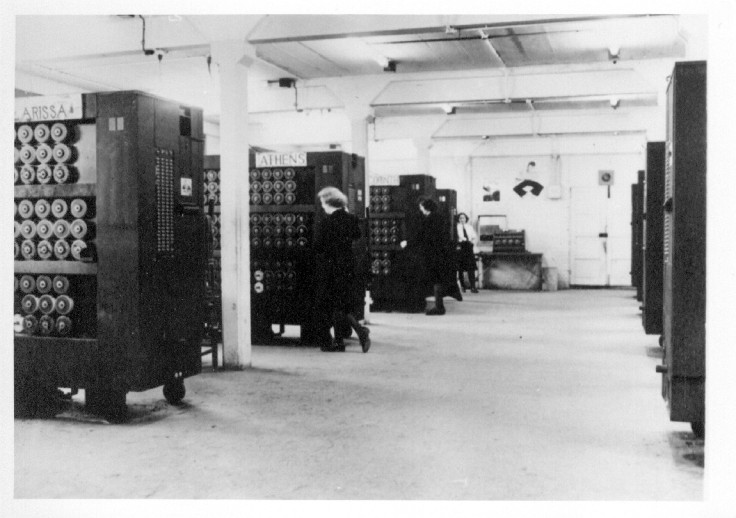WWII Enigma Codebreakers Dried Their Undies and Bras on Alan Turing's Bombe Machines

A WWII codebreaker who was hand-picked to work with the brilliant mathematician Alan Turing on decrypting Nazi Enigma messages at Bletchley Park has revealed that she and her co-workers would dry their underwear on the giant Bombe machines Turing designed.
From 1938 onwards, the Government Code and Cypher School (GC&CS) was based at Bletchley Park in Milton Keynes, Buckinghamshire.
Elizabeth "Betty" Balfour, 88, joined the Women's Royal Naval Service (more commonly known as the Wrens) in 1943 at the age of 17, and she was handpicked to work in Hut 8 with Turing's team of codebreakers on deciphering naval Enigma codes in order to learn about Nazi attack plans.
"One thing I remember was that during night shifts the Enigma machine was the only warm thing about, so we used to wash our smalls and hang them around it to dry," she told the Telegraph.
"It used to be festooned with bras and pants all through our night duty. Back then it must have looked a real sight."

Seeing as the Enigma machine is a small cipher machine in a wooden box where the Germans would encrypt their military communications, whereas the Bombe was a huge electromechanical machine that decrypted the messages and there were many of these machines onsite, Balfour was probably talking about the Bombe.
By 1944, there were roughly 10,000 men and women working at Bletchley Park.
Despite the fact that the hours were very long and the working environment in the huts very cold, a thriving community sprung up, with many of the employees becoming couples after meeting at social events held onsite.
Balfour said that she spent up to 10 hours a day sifting through ream after ream of code, and the team was never told whether their work had actually succeeded.
She was also not allowed to talk to other women on the team about the individual parts of the puzzle, and never told her parents what she was doing as she had signed the Official Secrets Act.
But best of all, Balfour has fond memories of Turing at Bletchley Park, who was well-known for being rather eccentric.
"We used to see Alan Turing from time to time, and back then we used to giggle and laugh," she said.
"We used to watch him walk backwards sometimes while reading a book, and we couldn't help but giggle at him for how he acted.
"It's too late for him now, but people should know what he did. I think because he was queer, he was pushed into the background, but all these people with these brilliant minds were a bit different in their own way."
© Copyright IBTimes 2024. All rights reserved.






